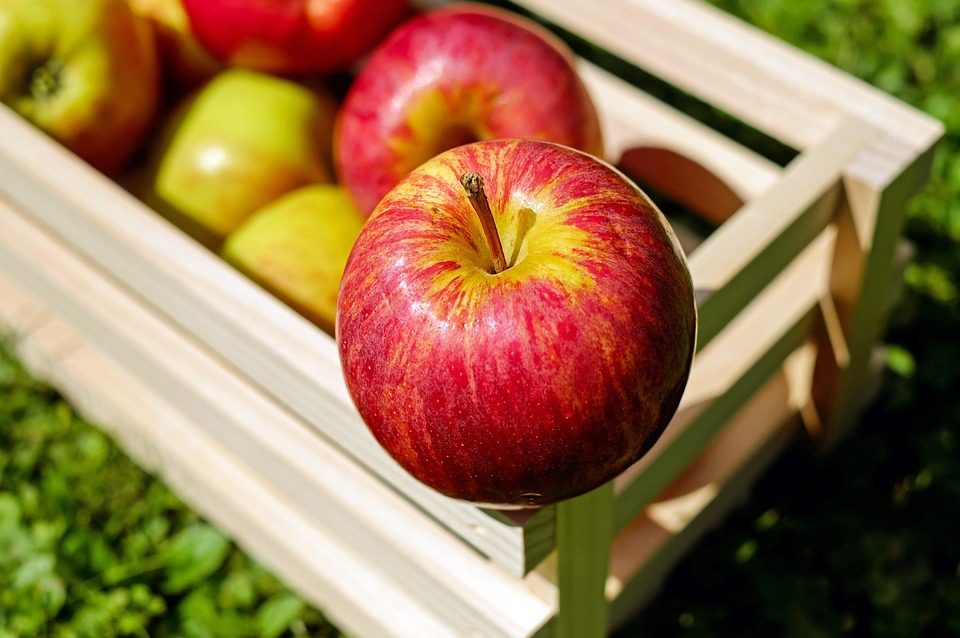Precision Matters: How a Nutrition Food Scale Can Transform Your Diet
In an age where information about nutrition is increasingly complex and abundant, achieving a balanced diet can feel daunting. With the rise of food trends, fad diets, and the overwhelming amount of dietary advice available, many individuals are left wondering how to make the best choices for their health. One often-overlooked tool that can significantly aid in this endeavor is a nutrition food scale. This article will delve into the ways a nutrition food scale can refine your dietary habits, enhance your cooking, and ultimately transform your overall health.
The Importance of Precision in Nutrition
Understanding Serving Sizes
When it comes to nutrition, precision matters. A common issue in dietary habits is misjudging serving sizes. The discrepancy between what people think is a serving and what is actually a serving can lead to unintended overeating and nutrient imbalances. Research has shown that people frequently underestimate their calorie intake and overestimate their servings of healthy foods, leading to possible weight gain and nutritional deficiencies.[1]
A nutrition food scale allows individuals to measure the exact weight of their food, ensuring that they are adhering to recommended serving sizes. By providing precise measurements, a food scale helps eliminate guesswork and fosters a more mindful approach to eating.
The Role of Macronutrients
Macronutrients—carbohydrates, proteins, and fats—play crucial roles in our health. Tracking these nutrients accurately can help individuals meet their dietary goals, whether they are aiming for weight loss, muscle gain, or maintaining a balanced diet. A nutrition food scale can facilitate this by allowing you to measure and track your intake of each macronutrient with greater accuracy.[2]
For example, consider the difference between estimating the amount of rice you are serving versus weighing it. A standard serving may be approximately 1/4 cup cooked, but weighing it can show you that it may actually be closer to 1/2 cup. This simple adjustment can make a significant difference in your daily carbohydrate intake.
The Impact of Micronutrients
Micronutrients, such as vitamins and minerals, are essential for various bodily functions, yet their importance is often overshadowed by macronutrients. Using a nutrition food scale can help ensure that you are not only tracking your macronutrient intake but also getting the right mix of micronutrients by encouraging more diverse food choices.[3]
By weighing fruits, vegetables, grains, and proteins, you can better understand how to build your meals toward optimal nutrition. This method also encourages variety in your diet, leading to increased intake of different vitamins and minerals.
The Psychological Benefits of Precision
Mindful Eating
Incorporating a nutrition food scale into your kitchen routine encourages mindful eating practices. Being mindful about what you consume can lead to better control over portion sizes and overall food choices. By measuring food, you become more aware of how much you are truly eating, which can reduce instances of overeating and emotional eating.[4]
Mindful eating also fosters a more positive relationship with food. Rather than viewing foods as “good” or “bad,” you start to see the value in understanding your body’s needs and preferences. This practice leads to more informed eating habits and a focus on balance rather than restriction.
Reduced Anxiety Around Food
For many, food and dietary choices can evoke anxiety. Keeping a food diary and tracking your intake can be overwhelming, but a nutrition food scale simplifies the process. With precise measurements, you can more easily meet your dietary targets without second-guessing yourself or feeling guilty about your food choices.[5]
By making informed decisions based on data, you can cultivate a healthier mindset toward food, reducing anxiety and fear associated with eating.
Practical Applications of a Nutrition Food Scale
Cooking and Baking
Measuring ingredients with precision is crucial when it comes to cooking and baking. A nutrition food scale allows you to achieve more consistent results, which is especially important in baking, where ingredient ratios can significantly affect the final product. When following a recipe, using a scale can lead to more reliable outcomes, as many are written with weight measurements rather than volume.[6]
Moreover, culinary professionals often use scales to enhance their cooking. By weighing ingredients, they can fine-tune recipes and recreate dishes with greater accuracy. With a nutrition food scale at your side, you, too, can turn your kitchen into a space of experimentation and mastery.
Meal Prepping
Meal prepping is a popular tactic for individuals looking to save time and adhere to healthy eating patterns. A nutrition food scale can streamline the meal prep process by allowing you to batch-cook meals and portion them accurately for future consumption. This practice not only saves time but also helps with portion control.[7]
By measuring your portions in advance, you can eliminate the guesswork during busy weekdays when healthy eating often takes a backseat. With a clear understanding of serving sizes, you can create a variety of meals tailored to your dietary needs.
Informed Grocery Shopping
Armed with your nutrition food scale, grocery shopping can become a more informed process. You can weigh servings of various foods, allowing you to calculate nutritional values accurately before purchasing. This practice can help you determine which products align with your dietary goals, thus making healthier choices without falling for misleading packaging claims.[8]
For example, when purchasing nuts, a quick weigh-in can help you understand how much you should buy without exceeding your desired caloric intake. This step not only aids in food selection but also in budgeting, as you gain insight into the cost of food per serving.
Integrating a Nutrition Food Scale into Your Routine
Setting Clear Goals
The first step to integrating a nutrition food scale into your routine is to set clear and achievable dietary goals. Whether you want to lose weight, gain muscle, or simply eat healthier, defining these objectives will guide your measurements, choices, and food tracking efforts.
Tracking Your Progress
One of the major advantages of having a nutrition food scale is tracking your progress over time. Keeping a record of your measurements and dietary choices can provide you with invaluable insight into how your food intake aligns with your goals. Over time, you will be able to see trends and patterns that can help further refine your diet.
Building a Support Network
Consider joining a community of like-minded individuals who share similar dietary goals. Whether it’s through social media, online forums, or local support groups, surrounding yourself with people who are committed to healthy eating can provide motivation and encouragement.
Adjusting as Necessary
Dietary needs can change over time due to various factors such as age, activity level, or health conditions. Utilize your nutrition food scale to make regular adjustments to your diet as needed. Regular weighing can help you stay accountable and aware of your nutritional status, allowing for flexibility in your eating habits.
Conclusion
In conclusion, the role of precision in nutrition cannot be overstated. A nutrition food scale can be a game-changer, transforming your diet through enhanced mindfulness, improved cooking practices, and informed choices. By ensuring accurate measurements of both macronutrients and micronutrients, you can achieve a balanced diet that meets your personal health goals.
In a world filled with distractions and misinformation about eating healthy, precision might just be the key to unlocking your well-being and transformation journey. As with any tool, the benefits come to fruition only when it is used consistently and correctly. By making a nutrition food scale a staple in your kitchen, you empower yourself to take control of your diet and health, one gram at a time.
References
- Bleich, S.N., et al. “Meal and Snack Patterns among Overweight and Obese Adults: A Focus on Portion Sizes.” Public Health Nutrition, vol. 20, no. 6, 2017, pp. 946-954.
- Melanson, K.J., et al. “Effects of Macromolecule Composition on Food Intake and Energy Expenditure in Humans.” Obesity Reviews, vol. 11, no. 3, 2010, pp. 169-182.
- Huang, J., et al. “Micronutrient Intake and Cognitive Function in Aging.” The Journals of Gerontology Series A: Biological Sciences and Medical Sciences, vol. 65A, no. 7, 2010, pp. 764-770.
- Wansink, B. “Mindless Eating: Why We Eat More Than We Think.” Bantam Books, 2006.
- van Strien, T. “Cause and Consequences of Emotional Eating.” Appetite, vol. 50, no. 1, 2008, pp. 1-3.
- Scarbrough, E. “Baking by Weight: Why Weighing Ingredients can Help You Get Science Right.” Baker’s Journal, 2019.
- Dhillon, J. “The Benefits of Meal Prepping for a Healthier You.” Nutritional Today, vol. 55, no. 3, 2020, pp. 10-14.
- Della Vale, B. “Shopping Smart: A Guide to Nutrition Labels and Product Choices.” The Food Journal, 2021.
This article encapsulates the value of a nutrition food scale while incorporating modern academic references, detailing its benefits, psychological impacts, practical applications, routine integration, and ultimately the transformative power this tool holds over dietary habits.


























Add Comment